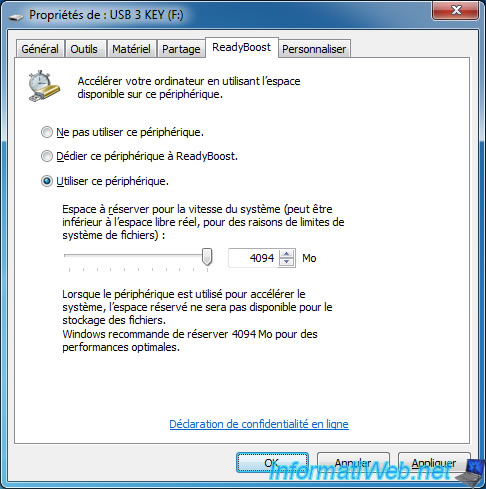

This recommendation should not be confused with the message that is displayed in the “ReadyBoost” tab of drive properties dialog: for example, for a flash drive of 16 GB capacity formatted as FAT32 it will display a message that “Windows recommends reserving 4094 MB for optimal performance” even if RAM size is 10 GB, just because 4094 MB is the maximum file size on a FAT32 volume after reformatting it as NTFS or exFAT, the message changes to “Windows recommends 15180 MB”. Microsoft recommends the amount of flash memory for ReadyBoost acceleration be one to three times the amount of random access memory (RAM) in your computer.Simply mounting as a subfolder of another drive won’t suffice, as only the root folder of a drive is suited for ReadyBoost cache - otherwise the “ReadyBoost” tab will not appear in the logical volume properties, nor will any previously created cache file be used. Because ReadyBoost stores its cache as a file rather than directly using the flash device in a raw manner, that file system must be mounted and assigned a drive letter.
#WHAT IS READYBOOST WINDOWS 7 WINDOWS 7#
Windows 7 supports multiple flash drives for ReadyBoost.

Vista SP2 does not support ReadyBoost for exFAT file system. Windows 7 also supports the new exFAT file system.

Flash devices typically are slower than a hard disk for sequential I/O so, to maximize performance, ReadyBoost includes logic that recognizes large, sequential read requests and has the hard disk service these requests. This caching applies to all disk content, not just the page file or system DLLs. Using ReadyBoost-capable flash memory (NAND memory devices) for caching allows Windows 7 and Vista to service random disk reads with performance that is typically 80-100 times faster than random reads from traditional hard drives. ReadyBoost is also used to facilitate SuperFetch, which allows it to perform analysis of boot-time disk usage patterns and creates a cache which is used in subsequent system boots.
#WHAT IS READYBOOST WINDOWS 7 PORTABLE#
It works by using flash memory, a USB flash drive, SD card, CompactFlash, external hard drive or any kind of portable flash mass storage system as a drive for disk cache. ReadyBoost is a component of Microsoft Windows, first introduced with Microsoft’s Windows Vista in 2006 and bundled with Windows 7 in 2009.


 0 kommentar(er)
0 kommentar(er)
